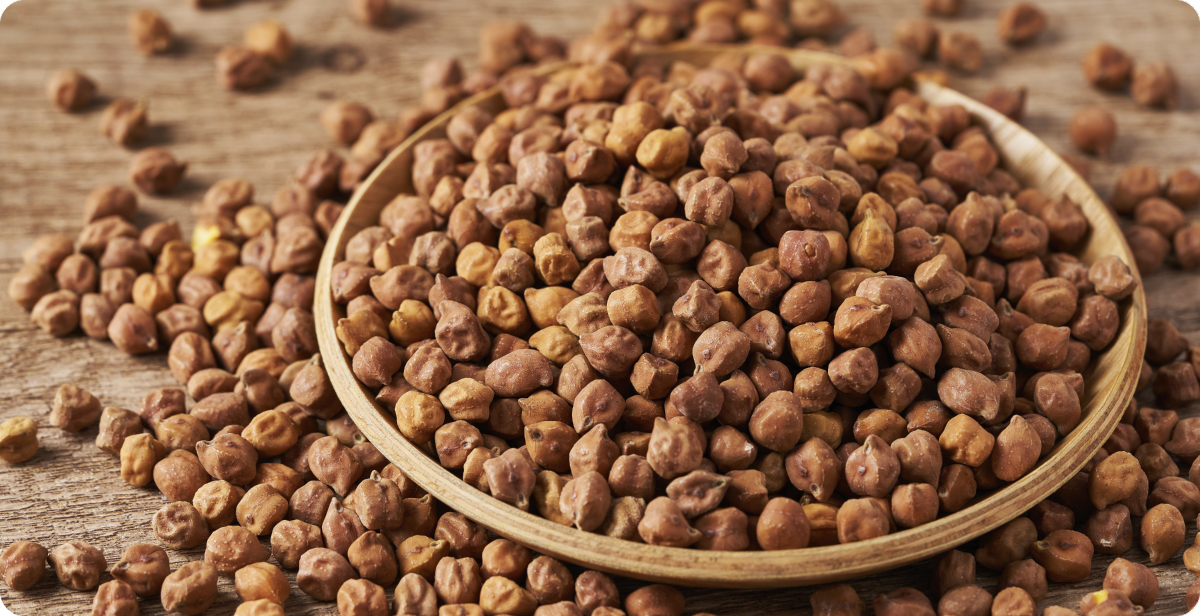April 30, 2025
We sat down for a chat with Harsha Rai of Mayur Global to talk imports, chickpea prices, and get a big picture view of Indian pulses.


The big question for Indian pulses is whether production will meet demand or not. The last two years we've been seeing production do down in other crops, similar to what we’ve seen with pigeon peas – production was too low and prices went up. Black matpe production has also been declining for the last five years. I would say the biggest challenge is the weather. Rising temperatures and unseasonal rains have troubled pulse production over the last few years, and these extreme events have caused production decline. They are affecting yields – acres are up, but the production isn't rising as much because yields have been very stagnant. We need to bring technology to farming in the way Australia has been doing – they're coming up with such phenomenal yields for the lentils. Another challenge is infrastructure: storage infrastructure isn't as good as it needs to be, which results in a post-harvest loss of around 15% – a significant loss.
We are very dependent on the monsoon, so the news that it will be above average is always good. It also affects the sentiment of the markets, so people will take a position in a very short-term way now. However, nothing is certain – the monsoon may be good, but it is also very important it is timely and well distributed. If it is delayed, then seeding of black matpe will be affected, for example. Traders and importers are not going to rush into big purchases for kharif crops, especially black matpe and pigeon peas. Pigeon peas are already trailing very close to the minimum support price (MSP) as prices have corrected so much. Sentiment is not bullish on pigeon peas right now, but black matpe purchases will depend on if the monsoon is on time. I think everybody is going to take a very short-term trade position for the coming months.

Despite heat stress affecting some regions, marginally higher chickpea production is expected due to better yields in other states, exceeding last year's estimate by approximately 500 KMT.
I was in Brazil recently and found growers were really interested in growing pulses. They're not getting money from their grains in the same way, but they are getting good money from pulses. They also want to use it as a crop in their rotation. It’s true that in India, crop rotation is not taken as seriously as an important tool for fixing nitrogen, so I think Indian growers need to be educated on how crop rotation can really help their soil as well as their next crop. It would increase the productivity in pulses that has been dropping for so many years. I do think this is something the government is already working on, and we will see a lot of changes coming into the Indian pulse industry as the government is going to help growers understand these topics.
The chickpea crop experienced heat stress during harvest, impacting yields in certain regions. However, some states reported better-than-usual yields, resulting in a marginally higher production estimate that was around 500 KMT more than last year, as per the government's latest advanced estimate. Despite increased acreage, stagnant yields in some areas have tempered overall production growth. The recent influx of chickpeas into the market has led to downward pressure on prices, which have fallen slightly below MSP over the past 15-20 days. Growers are eager to sell their produce, as the government does not procure the entire chickpea crop at MSP. Instead, government procurement at MSP is limited to specific pulses, including lentils, pigeon peas, and black matpe. Currently, around 75% of the chickpea crop will be entering the local market, as the government will likely procure around 25% of the production at MSP.
The quality of our lentils this year is excellent, and it's avoided the weather damage that we've seen in some chickpeas. The arrivals have been few and far between in the market because growers are, in my opinion, holding onto stocks they would prefer to sell to the government at MSP. The government has assured growers that they will be buying the whole lentil crop at MSP – I think this is the reason we are not seeing so much pressure from new crop arrivals right now. There is a lot of difference between the MSP and the local price, which is much lower. As we aren't seeing those arrivals, we also can't get a clear picture of how much production has increased this year.
The government has faced significant challenges in controlling pulse inflation, particularly due to fluctuations in pigeon pea prices and production. Historically, production shortfalls, such as the 2.5 MMT output against a consumption demand of approximately 4.2 MMT, have driven prices up. However, recent trends show there has been a welcome correction – pigeon pea prices have dropped from ₹120 per kilogram to around ₹70 per kilogram, thanks to increased production. This decline has been complemented by a surge in mung bean production, especially in central India, resulting in a substantial buffer stock of around 700 KMT. The government is now in a strong position to manage pulse prices. Similarly, chana prices have also corrected, returning to near-Minimum Support Price (MSP) levels of ₹56.50 per kilogram after peaking at ₹84 per kilogram in September-October last year. These developments signal a positive shift in pulse market dynamics, and may ease inflationary pressure and stabilize staple food prices.
India's chickpea market might face a potential shortage due to depleted inventories of old crop and significantly reduced government buffer stocks. With a projected 1.5 MMT supply-demand gap, additional imports may be necessary to bridge the deficit. This year’s production in India is expected to be marginally higher than last year (500 KMT+). The government will need to strike a balance between imports, stock management, and price control measures to stabilize the market. This challenge is compounded by limited international support, as Australia is nearly sold out of its current cycle with new harvests expected in October. Tanzania is anticipated to contribute a modest crop in July-August Furthermore, the overall pulse market dynamics will also depend on the performance of other pulse crops in the coming months, particularly given the optimistic outlook for the kharif season due to good monsoon forecasts and higher seeding expectations.
When global trade slows down—meaning countries import and export less—it hits emerging markets like India too. Our economy is closely tied to global trade. The escalation of tariffs by the U.S. hasn’t only disrupted global trade dynamics, it has also exposed structural vulnerabilities in India’s export ecosystem. While India has temporarily avoided the full impact due to a 90-day pause in reciprocal duties, its exposure remains significant. Regarding pulse imports, our primary focus is on green lentils, with a smaller quantity of yellow peas sourced from the United States. Currently, India is not purchasing green lentils due to unfavorable price parity. The United States plans to expand green lentil acreage, would be interesting to see how price adjustments will happen on we see harvest.

Indian pulses outlook 2025 / India pulse production challenges / Monsoon impact Indian pulses / chickpea rabi crop 2025 / Rabi lentil crop 2025 / India food inflation / Indian pulse imports tariffs / Crop rotation India pulses
Disclaimer: The opinions or views expressed in this publication are those of the authors or quoted persons. They do not purport to reflect the opinions or views of the Global Pulse Confederation or its members.